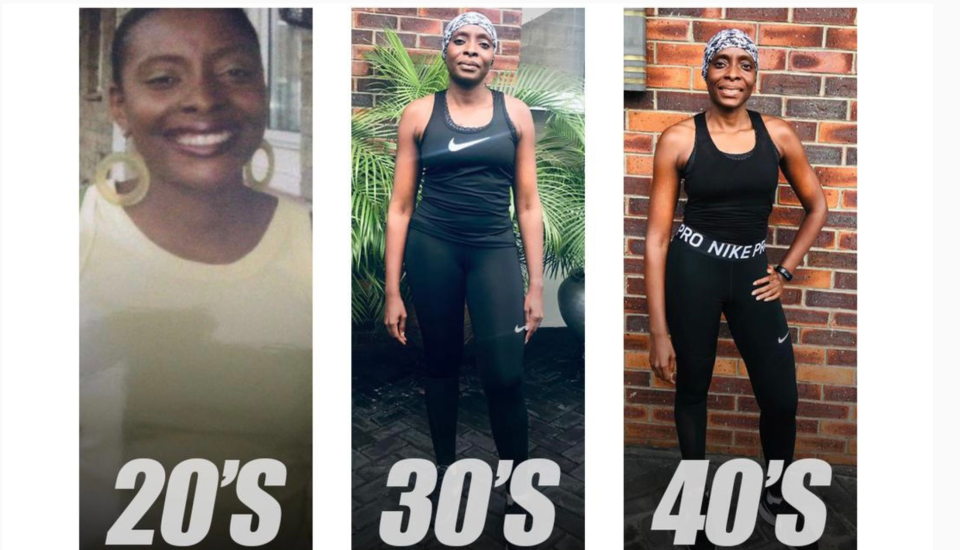
Strength training should be top of your list if you desire to improve your health. Strength training involves the performance of physical exercises that are designed to improve strength and endurance. With a massive body of evidence supporting its many benefits, strength training has become highly recommended as part of most exercise programs.
I became more interested in strength training when I discovered its unique benefits for women. With my regular practice of strength training, I can testify that it is indeed the elixir of youth. I am stronger, have more energy for everyday activities, and fitter today than I was in my younger years. I attribute some of these to strength training 3-4 times a week. My experience with regular strength training reinforces the saying “Age is just a number” because while my numbers are adding up as I get older, I am equally experiencing a vibrant and energy-full life.
The essence of adopting positive lifestyle habits like regular exercise, whole foods-based nutrition, quality sleep, etc., is so that you take some control over the natural physical decline that happens as you get older. Just like gravity, we will undoubtedly get older (age); however, we can slow down the process by practising helpful lifestyle habits. It can be as little as adding a portion of vegetables to most meals, swapping a soda for water, or increasing your workout time from 20 mins to 30 mins daily.
In this article, I will zero in on strength training and share reasons why every woman over 30 should strength train at least three times a week as a proactive measure to age gracefully in strength, with high energy and physical wellness.
Bone density decreases as we get older, and if you don’t do anything about it, you risk losing muscle mass and developing a bone deterioration disease like Osteoporosis. “Osteoporosis is a bone disease that develops when bone mineral density and bone mass decrease or when the quality or structure of bone changes. It can lead to a decrease in bone strength, increasing the risk of fractures (broken bones).” If you consistently lose muscle mass, your strength and endurance are affected, leading to decreased functional performance. Your body might start to fail you, and the things you could do easily before can become a chore due to a lack of strength.
Put yourself ahead by strength training
It isn’t entirely clear when bone deterioration can occur, and my advice is to put yourself ahead by strength training a few times a week. With strength training exercises, you stress your bones, leading to an increase in bone density.
I watched a video on Instagram. It was of a grandfather who spent months using a kettlebell (a large cast-iron ball-shaped weight with a single handle) to strength train. He did this because he wanted to build up bone strength in his legs so he could lift his granddaughter. On Christmas Day, he surprised everyone by raising his granddaughter to fix the star on the Christmas tree. Beyond the aesthetics of toned arms or legs, strength training makes daily activities seamless. Whether you want to pick up your child, walk up a flight of stairs, or carry your groceries at the supermarket, you need strong bones.
What hurts today makes you stronger tomorrow.
According to a publication by Harvard Health, “A combination of age-related changes, inactivity, and inadequate nutrition conspire to gradually steal bone mass, at the rate of 1% per year after age 40. As bones grow more fragile and susceptible to fracture, they are more likely to break after even a minor fall or less obvious stress, such as bending over to tie a shoelace”.
Growing up, I remember seeing some older women who struggled with movement. When I asked questions, some would say they woke up one morning and realized that walking was suddenly difficult. Today, with what I know about fitness and the role of strength training, I can’t help but wonder if those women were suffering from some type of bone deterioration disease like Osteoporosis.
Another important thing when you begin to strength train is increasing your body’s muscle mass. Undoubtedly good news for weight loss and weight management because an increase in muscle mass means your body burns calories/energy faster. This increases your basal metabolic rate (BMR), which helps you lose weight.
Some research shows that your metabolic rate is increased up to 72 hours after strength-training exercise, which means that you’re still burning additional calories hours and even days after your workout. I used to be a cardio queen, and for some reason, I believed cardio exercises like running and aerobics were the best choices until I started strength training. After a few months of strength training, I noticed an improved body composition. I decreased body fat in key areas like my stomach and noticed a visible leanness that I hadn’t experienced before strength training. The best term to describe this is a “toned” body.
I have met a lot of ladies who don’t lift weights or use dumbbells because they believe they’ll look masculine, so I offer them resistance bands instead. I started my strength training journey with resistance bands years ago, and I still incorporate them to date. They deliver on bone density increase and help to increase muscle mass. You can start your journey with resistance bands too.
On a final note, if you are a woman over 40, you should incorporate strength training into your workout routine and if you don’t exercise, today is a good day to start.



